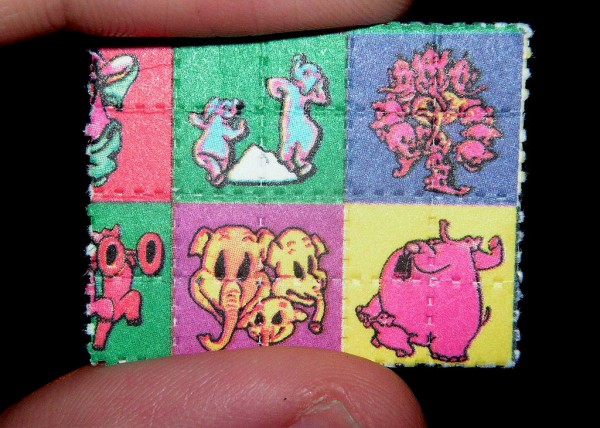By Ruth Karla Mae Domingo, | January 27, 2017

Researchers have finally discovered the reason why the effect of LSD lasts for such a long time. (Psychonaught)
Lysergic Acid Diethylamide (LSD) is widely known to have hallucinogenic effects to the human brain. The effect can last for a long time ranging from 12 to 18 hours.
The duration is longer than any other hallucinogen. This pushed scientists to investigate the drug in the 60s and 70s.
Like Us on Facebook
Now, a recent study has visualized how LSD affects our brain. The effect of the drug lasts long because once LSD travels into brain receptors, it gets literally stuck-within a side pocket. This discovery could help in the production of new, longer-lasting drugs to treat a variety of psychological disorders.
For long, researchers had been puzzled about why the half-life (the amount of time a drug can be found in someone's blood) for LSD lasts only about a half hour to an hour long when the hallucinogenic effects of the drug often lasts for a full day - sometimes even longer. In fact, it even last long after the drug could be detected in a person's body.
The researcgers used special photographs called crystallography images that display how atoms are arranged within a molecule to figure it out.
Zeroing on images of an LSD molecule within a serotonin receptor (these receptors are found throughout the brain and body, and create hallucinogenic effects when they attach to LSD), the photos showed how LSD combines with serotonin and gets stuck within the inner pocket located inside the receptor at such a strong angle that getting out is a hard task.
These serotonin receptors traps protein structure folds over the LSD molecule.
One of the authors of the study, who is a pharmacology professor at the University of North Carolina at Chapel Hill, Bryan Roth, explained how potent LSD is.
Roth closely analyzed the binding technique unique to LSD. Along with his team, he applied this new knowledge to produce novel a drug to treat depression, schizophrenia, and other psychiatric disorders.
Drugs used to treat such disorders also work with serotonin receptor interactions. Their idea was to formulate a drug that will be trapped inside receptors in the same way without causing the same hallucinogenic effects.
This binding effect could also open up the possibility for drugs that target stuff other than serotonin. Moreover, "it may even be a way to give drugs at very low doses," Rother said. If the molecules remain in the receptor and do not go, he said, then you may need far less of them to create the desired effect.
Roth also noted that the recent findings about LSD could contribute to the apparent wonders of LSD "microdosing" - where people claim that even tiny, undetectable amounts of the drug provide an obvious effect, for example: boosting creativity and clears out depression (although no evidence-based studies exist to back this up yet).
The team exposed cells in a petri dish to tiny amounts of LSD and the serotonin receptor's triggers were altered, indicating that a change is about to occur. The researchers plan to carry out further studies. The team is focusing on schizophrenia first, using the new knowledge they have gained to create new therapies.
-
Use of Coronavirus Pandemic Drones Raises Privacy Concerns: Drones Spread Fear, Local Officials Say

-
Coronavirus Hampers The Delivery Of Lockheed Martin F-35 Stealth Fighters For 2020

-
Instagram Speeds Up Plans to Add Account Memorialization Feature Due to COVID-19 Deaths

-
NASA: Perseverance Plans to Bring 'Mars Rock' to Earth in 2031

-
600 Dead And 3,000 In The Hospital as Iranians Believed Drinking High-Concentrations of Alcohol Can Cure The Coronavirus

-
600 Dead And 3,000 In The Hospital as Iranians Believed Drinking High-Concentrations of Alcohol Can Cure The Coronavirus

-
COVID-19: Doctors, Nurses Use Virtual Reality to Learn New Skills in Treating Coronavirus Patients








